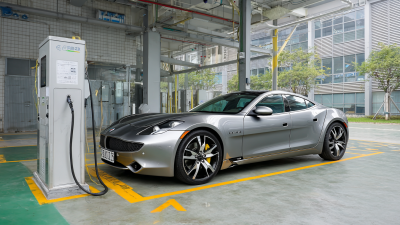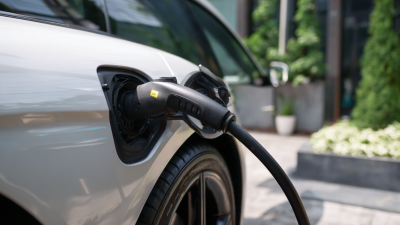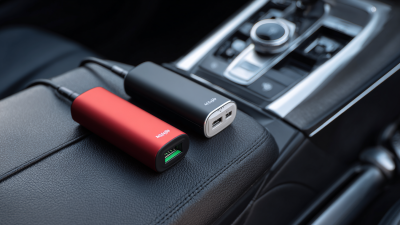
Wall Mounting EV Charge Station
Noteworthy Variants of AC EV Charging Cables You Should Consider
As the electric vehicle (EV) market accelerates towards unprecedented growth, the demand for efficient and reliable charging solutions is more critical than ever. According to a report by Allied Market Research, the global electric vehicle charging infrastructure market is projected to reach $70.8 billion by 2027, with a significant emphasis on the adoption of AC EV charging cables. These cables play a vital role in establishing a seamless connection between EVs and charging stations, impacting charging speeds and user experience. Various noteworthy variants of AC EV charging cables are entering the market, driven by advancements in technology and the increasing standardization across manufacturers. Understanding the distinctions between these types is essential for both consumers and businesses looking to invest in the future of sustainable transportation. In this blog, we will explore the key variants of AC EV charging cables you should consider as the landscape of electric vehicle charging continues to evolve.

Essential Features of AC EV Charging Cables to Consider for Your Vehicle
When selecting AC EV charging cables, it's crucial to consider several essential features that can significantly impact your charging experience. First and foremost, the cable's amperage rating plays a vital role in determining the charging speed. Most homes are equipped with 120V outlets, which can deliver around 12-16 amps, allowing for a charging speed of approximately 3-5 miles of range per hour. However, for faster charging, investing in a 240V outlet with cables rated for 30 amps can provide up to 25 miles of range per hour, making it a worthwhile consideration for frequent EV users.
Another important feature is the length of the charging cable. A standard length is typically around 25 feet, which allows for flexibility in parking arrangements. However, longer cables may be necessary for certain situations, especially if your EV is parked farther from the power source. Keep in mind that longer cables can lead to some voltage drop, so always check the specifications to ensure compatibility with your vehicle and to maintain optimal charging efficiency.
Tips:
1. Always choose cables that are UL-listed or certified to ensure safety and reliability.
2. Consider investing in cables that come with weather-resistant features if you plan to charge outdoors.
3. When purchasing, pay attention to warranty options – a longer warranty period can indicate quality assurance from the manufacturer.

Comparative Analysis: Level 1 vs Level 2 Charging Cables for EVs
When it comes to charging electric vehicles (EVs), understanding the differences between Level 1 and Level 2 charging cables is crucial for both efficiency and convenience. Level 1 charging typically involves a standard household outlet, providing 120 volts of electricity. This method is ideal for overnight charging but can be slow, often taking 8-20 hours to fully charge an EV, making it suitable for those who don’t drive long distances daily. The simplicity of Level 1 charging appeals to many homeowners with the infrastructure already in place.
On the other hand, Level 2 charging cables operate on a 240-volt outlet and significantly reduce charging time. They are commonly found in public charging stations and can replenish an EV’s battery in just a few hours. This enhanced speed is beneficial for those who need to charge quickly during the day or for businesses that want to provide efficient charging solutions for their customers. As the demand for EVs grows, choosing the right charging cable will not only enhance the EV ownership experience but also contribute to the overall efficiency of electric vehicle infrastructure.
Material Matters: Choosing the Right Insulation for Durability and Performance
When selecting AC EV charging cables, the choice of insulation material is paramount for ensuring both durability and performance. Recent advances in the construction industry highlight the significant role of materials in enhancing energy efficiency and sustainability. For example, the integration of bio-based insulation materials in building applications can boost energy efficiency by 30% compared to conventional options. This shift toward sustainable materials is not just a trend but a necessity as the construction sector faces increasing demand for non-renewable materials.
In a similar vein, the advent of nanomaterials such as graphene-augmented concrete presents exciting prospects for EV cable insulation. Graphene's remarkable properties—such as enhanced thermal conductivity and strength—could lead to charging cables that are not only lighter but also more efficient in energy transfer. As the race towards the electrification of transportation accelerates, leveraging these cutting-edge materials could redefine what we expect from EV charging infrastructure. Such innovations can significantly impact the performance and longevity of charging solutions, making them a crucial consideration for consumers and manufacturers alike.
Material Matters: Choosing the Right Insulation for AC EV Charging Cables
This chart displays the performance characteristics of various insulation materials used in AC EV charging cables, highlighting their thermal resistance and flexibility. These factors are crucial for durability and effective performance over the cable's lifespan.
Future-Proofing: Why Smart Charging Cables are Worth the Investment
As electric vehicles (EVs) continue to gain popularity, the importance of investing in smart charging cables has become increasingly evident. Unlike traditional charging options, smart charging cables come equipped with advanced technology that allows them to communicate with both the vehicle and charging station. This capability enables them to optimize charging efficiency, thereby reducing energy costs and prolonging the life of the battery. Investing in smart cables ensures that users can take advantage of the latest charging innovations and standards, effectively future-proofing their setup as EV technology evolves.
Moreover, smart charging cables often provide additional functionalities, such as integrated mobile apps that allow users to monitor their charging status, schedule charging times, and even receive notifications when charging is complete. This seamless integration of technology not only enhances user convenience but also empowers EV owners to adopt a more sustainable lifestyle by maximizing their vehicle's efficiency and minimizing energy waste. With the rapid advancements in electric mobility, choosing smart charging cables is not just a choice but a strategic investment in future infrastructure that complements the growing market for electric vehicles.

Maintenance Tips for Extending the Life of Your AC EV Charging Cable
When investing in an AC EV charging cable, it’s essential to consider maintenance tips that can extend its lifespan and optimize charging efficiency. Proper handling is key; always grip the plug and never yank the cable to disconnect it. This practice helps to prevent wear and tear on both the connectors and the cable itself, ensuring a longer service life.
Additionally, regular inspection of your charging cable can aid in early detection of issues. Look for signs of fraying, cracks, or any exposed wiring. If you notice any damage, it's crucial to replace the cable immediately to avoid safety hazards. Keeping the plug clean and free from dirt or debris is also vital, as contaminants can interfere with the connection and reduce charging effectiveness.
Storing your AC EV charging cable correctly is another important maintenance practice. Avoid coiling the cable too tightly, as this can lead to internal damage over time. Instead, use loose loops or a designated storage reel to keep it organized. When not in use, store the cable in a cool, dry place away from direct sunlight, as prolonged exposure can deteriorate the material and impact performance. By following these tips, you can significantly enhance the longevity of your AC EV charging cable.
Related Posts
-

2025 Trends Revealed 7 Key Innovations in Best Ev Charger Technology
-

7 Tips for Choosing the Best AC Ev Charging Cable for Your Electric Vehicle
-

Unleashing Innovation in Portable EV Chargers from China Quality Assurance for Global Buyers
-

7 Compelling Reasons to Choose Home Wall Ev Charge Station for Your Business
-

5 Compelling Reasons Why Investing in AC EV Chargers is Crucial for Sustainable Growth
-

Innovative Approaches for Efficient Home Wall Ev Charge Station Installation

